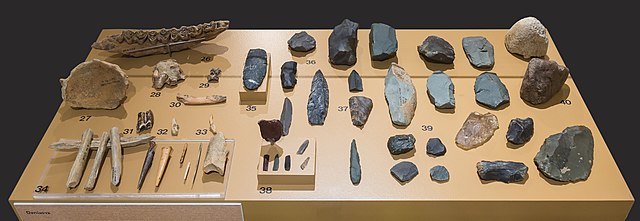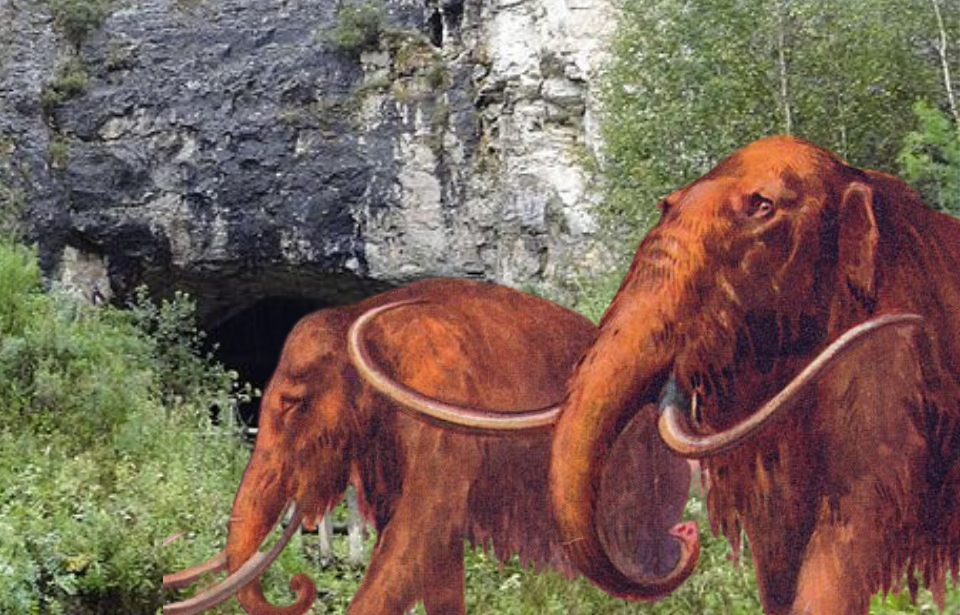During the 1970s, Soviet scientists became aware of the Denisova Cave, in Siberia’s Altai mountains. Many decades later, ancient relics continue to emerge from the site. A prominent artifact was found during the summer of 2018: a tiara devised from the tusks of the woolly mammoths that once roamed the region.
The head ornament most likely graced the head of a male and is between 30,000-50,000 years old – and experts are still debating just what exactly its purpose was. Keep reading to learn more about this fascinating find.

Given its age, the ivory tiara is among the oldest items of its type found in Ancient North Eurasia. It could have been produced by the now-extinct Denisovans, one of the several human branches to which the cave provided shelter in ancient days.
The Siberian Times wrote, “The suspicion is that the tiara – or diadem – was made by Denisovans who are already known to have had the technology 50,000 or so years ago to make elegant needles out of ivory and a sophisticated and beautiful stone bracelet.”
The ancient ornament likely served a very pragmatic purpose: to keep the hair back of its wearer. The item was fragmented, with the biggest piece found measuring 5.9 inches. Due to its prominent size, archaeologists concluded that it was designed for a man, instead of a woman.
That being said, the possibility isn’t excluded that the tiara was perhaps used to tell the person’s status or belonging to a certain tribe or family. This postulation is linked to production in the region of the Yana in Yakutia, although in a different time period. Had this been the case, then the tiara may have functioned as an ancient form of identity card.
Markings on the ornament indicate the item had worn out and was junked in the cave. No religious markings were found on it, nor was any other decoration. A hole is noticeable, however, most likely used for threading a cord to affix the asset on the head.
A 50,000-year-old “tiara” made of curved wooly mammoth tusk that may have been worn as headgear by a Denisovan man has been discovered in Siberia’s Denisova Cave, for which the early human species is named. https://t.co/z5Csra73WK pic.twitter.com/gWtpfFPr6S
— Archaeology Magazine (@archaeologymag) December 7, 2018
The find has excited scientists, needless to say.
“Finding one of the most ancient tiaras is very rare not just for the Denisova cave, but for the world,” Alexander Fedorchenko with Russia’s Novosibirsk Institute of Archeology and Ethnography said in an interview with The Siberian Times. “Ancient people used mammoth ivory to make beads, bracelets and pendants, as well as needles and arrow heads.
“The fragment we discovered is quite big, and judging by how thick the (strip) is, and by its large diameter, the headband was made for a big-headed man,” he added.
With the passage of time, the diameter of the tiara may have slightly altered. Since it’s a natural object that underwent bending, it naturally tends to go back to its original form. That’s a factor to be considered when contemplating just how big the wearer’s head was, according to Fedorchenko.
The 50,000-year-old tiara isn’t the first mammoth ivory item unearthed from the Denisova cave site. Archaeologists have also uncovered dozens of relics and fragments of the same material, including arrowheads, bracelets and beads. A tiny piece of yet another ornamented ivory tiara was also previously found.
The 2018 dig and discovery are proof that the tiara’s makers had a thorough knowledge of how to both treat and manufacture mammoth ivory. They knew how to carve the tusks and bathe them in water, then how to bend them at the right angle, grind, polish and drill through them. These processes ensured the durability of the final product.

The recently discovered tiara is also significantly older than other ivory-made tiaras excavated from other sites across Russia by at least 15,000 years. Such production knowledge is largely associated with Homo sapiens, but, in the case of this one, Fedorchenko says “we likely deal with another, more ancient culture,” like the Denisovans.
The species had genes that resemble that of modern humans. They were dark-skinned, brown-haired and brown-eyed. They also seemed to have had a keen interest in head assets. Distant descendants survive among the Indigenous populations of Papua New Guinea and Australia, though they share only a small percentage of genetic material with the extinct ancients.
More from us: The Earliest Documented Labor Strike Occurred During the Reign of Ramesses III
Researchers still need to conduct more work on the rare and ancient ivory tiara, including narrowing down its age more precisely and reproducing, in images, how it looked when it was first produced.
